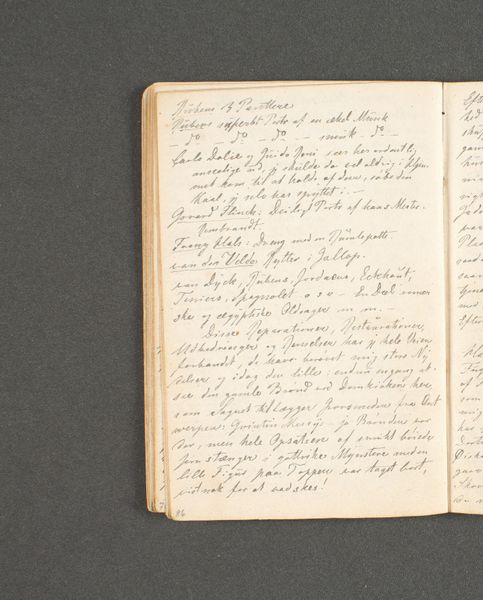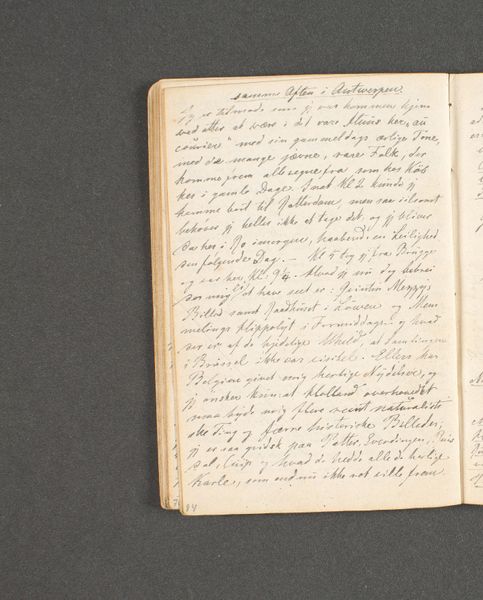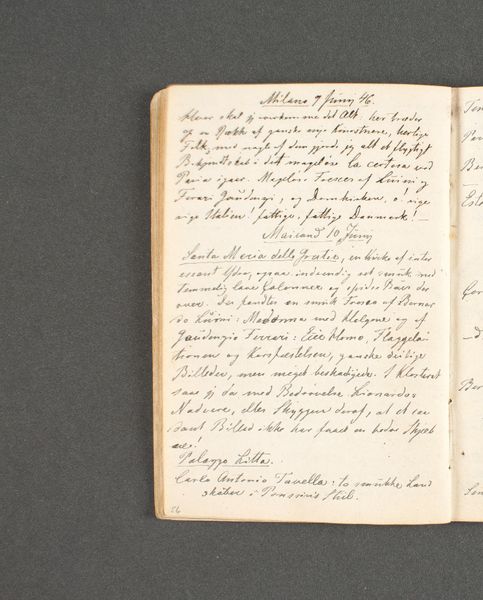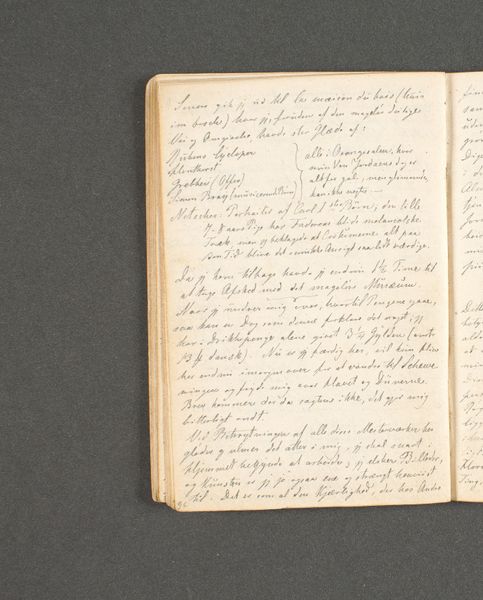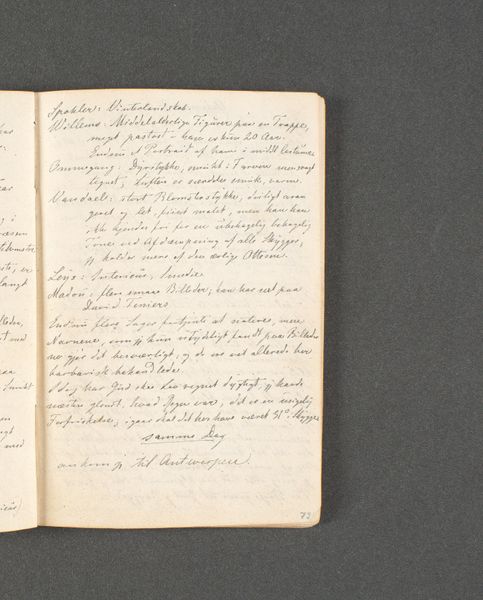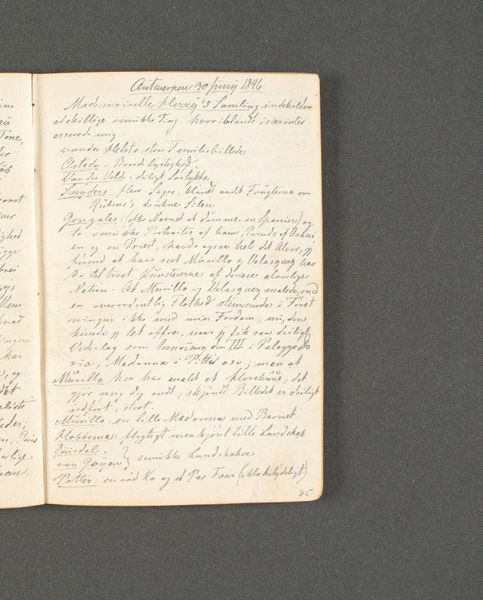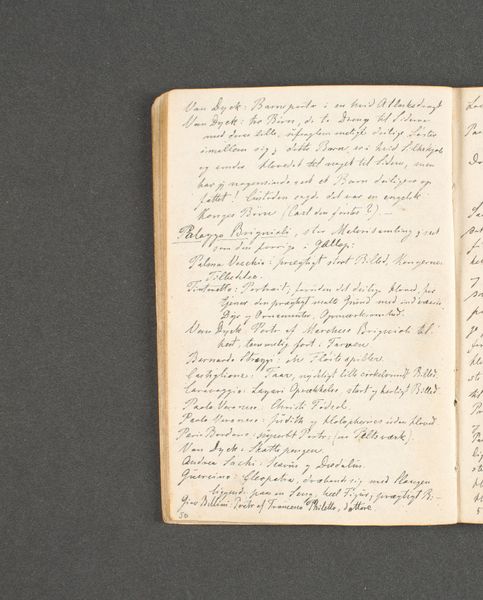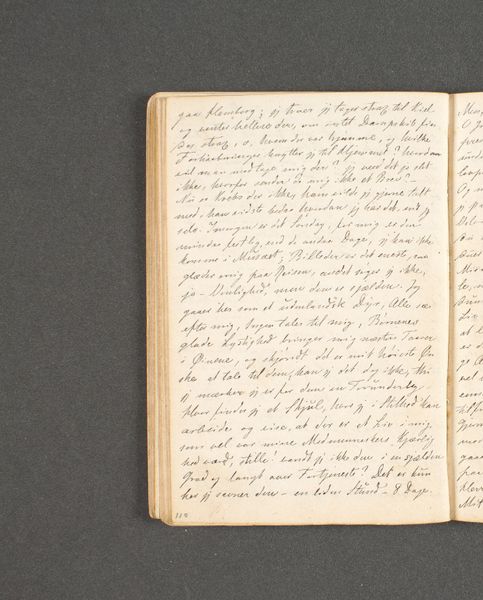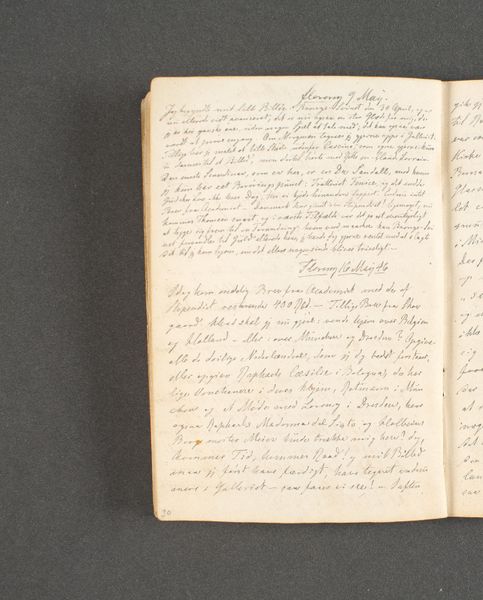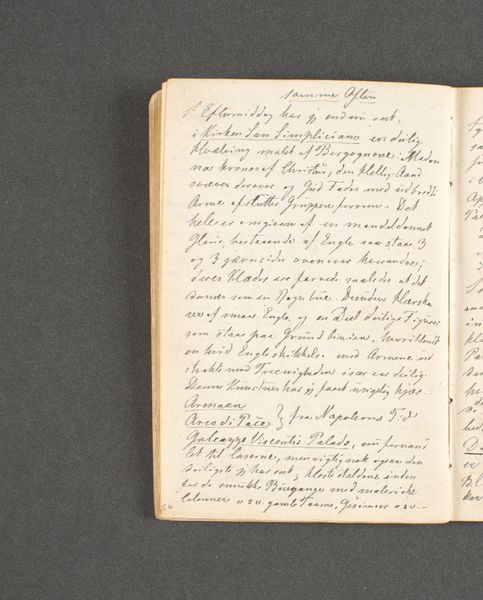
drawing, paper
#
drawing
#
landscape
#
paper
#
romanticism
#
miniature
Dimensions: 131 mm (height) x 89 mm (width) (bladmaal)
Curator: "Rejsedagbog. Haag," a page from Johan Thomas Lundbye's travel journal dating back to 1846. The writing is very dense and covers both pages visible. What captures your attention most when you look at it? Editor: It's the intimacy of it. You feel like you're peeking into the artist's personal thoughts and experiences. How would you interpret the significance of such a personal document being displayed publicly? Curator: It's crucial to see this within the context of 19th-century travel and documentation, a time of burgeoning Romantic nationalism. Lundbye wasn't simply recording landscapes; he was actively constructing a vision of Danish identity intertwined with specific places. Editor: So the act of writing and sketching itself becomes a political act? Curator: Precisely. This isn't merely a diary; it's a form of cultural production. Think about who had access to travel and education during this period. Whose voices and perspectives were being amplified? Consider the power dynamics inherent in representing a place and its people through a specific, often privileged, lens. This connects to postcolonial theory, urging us to examine how representations, even seemingly benign landscape sketches, can be implicated in larger systems of power and knowledge production. What is omitted from the drawing or left unsaid becomes critically relevant here. Editor: It makes me consider the artist's responsibility in portraying a place. Curator: Exactly! We need to think critically about the ethics of representation, and who benefits from certain narratives. Lundbye’s journal is a testament to the idea of Danish identity formation during the nineteenth century. This helps one reflect on how society forms through art and social action. Editor: That really shifts my perspective on the piece. It's not just a personal diary, it's a historical and cultural artifact loaded with meaning. Curator: It's a great example of how even seemingly private artistic endeavors can contribute to larger public conversations about identity and place.
Comments
No comments
Be the first to comment and join the conversation on the ultimate creative platform.
